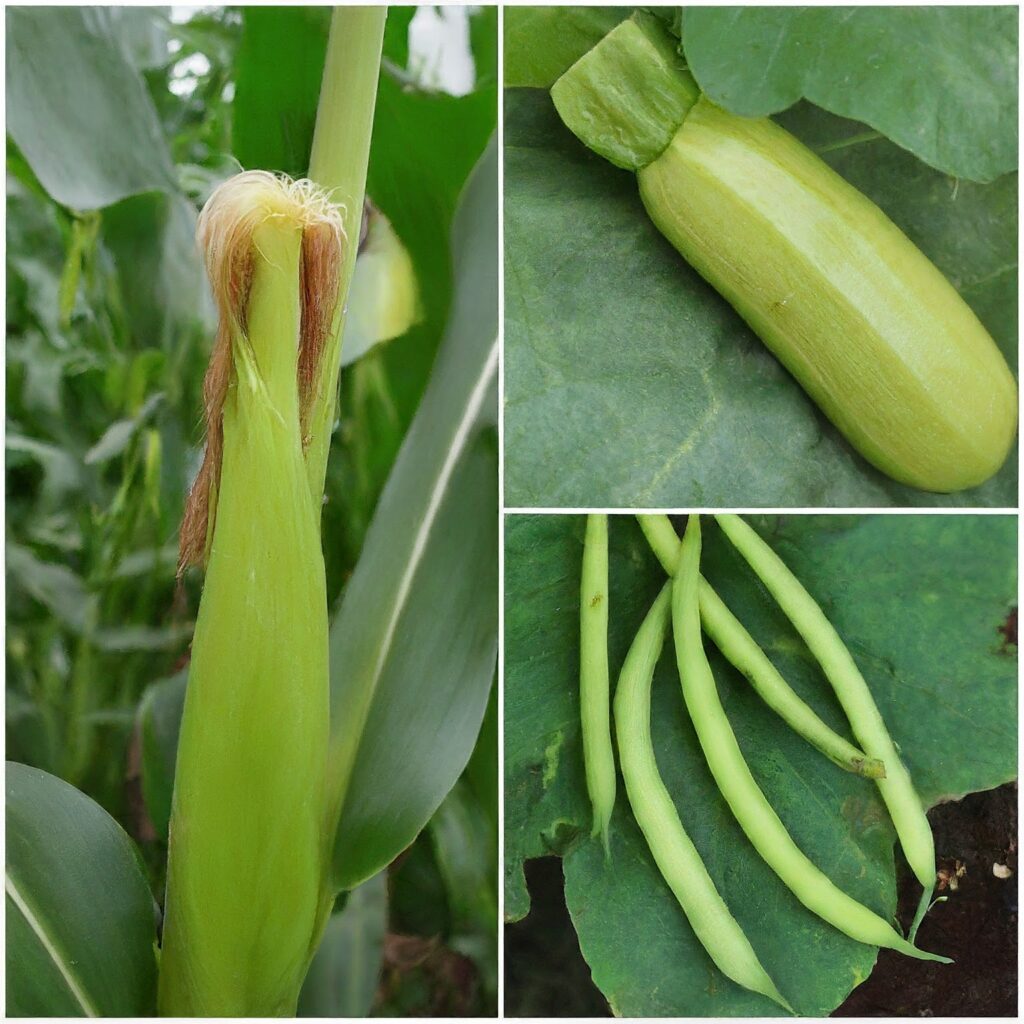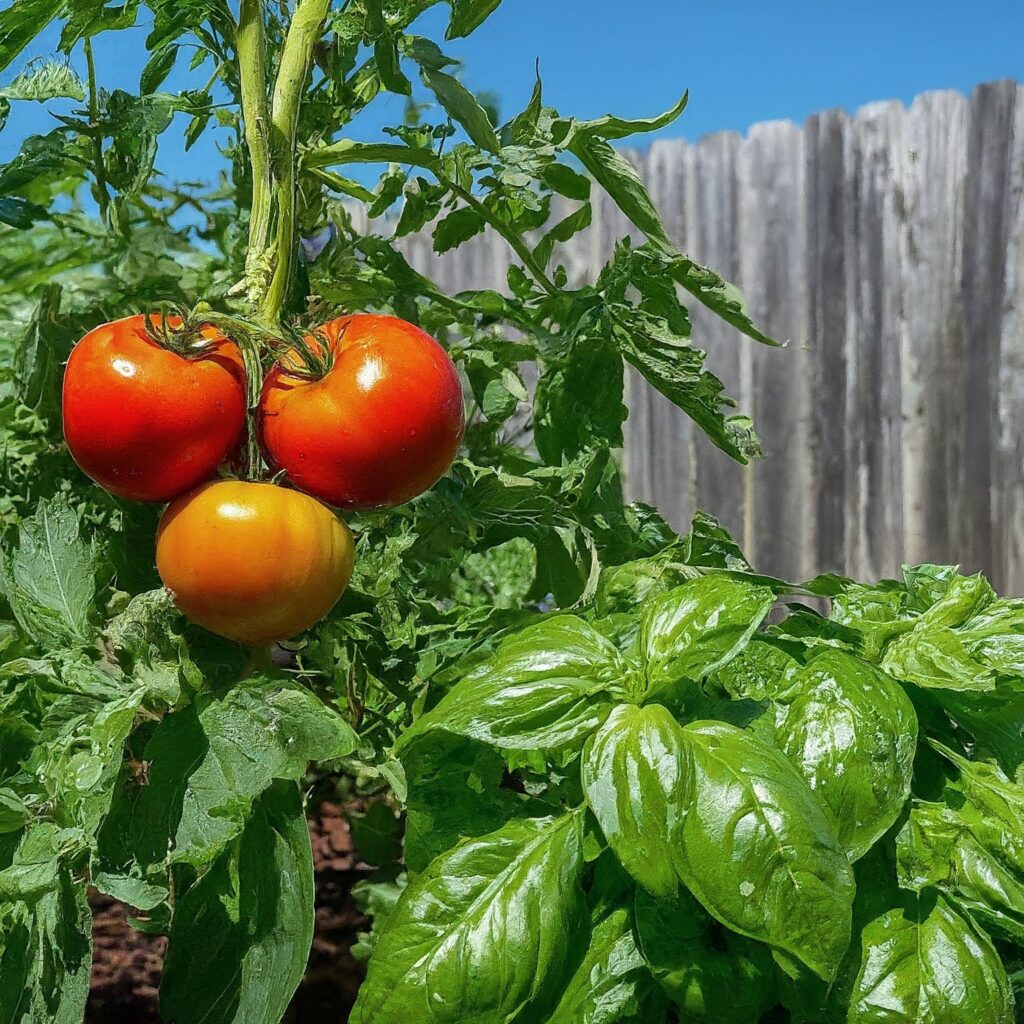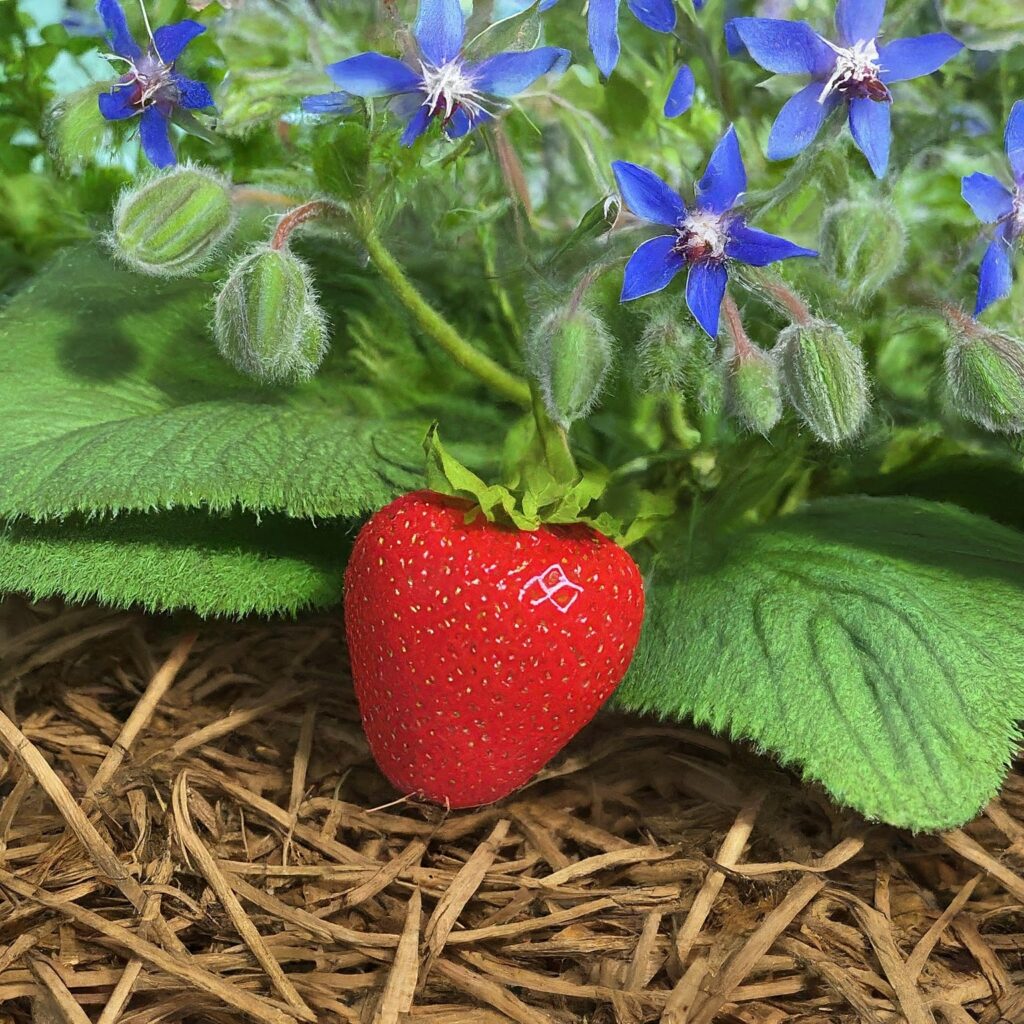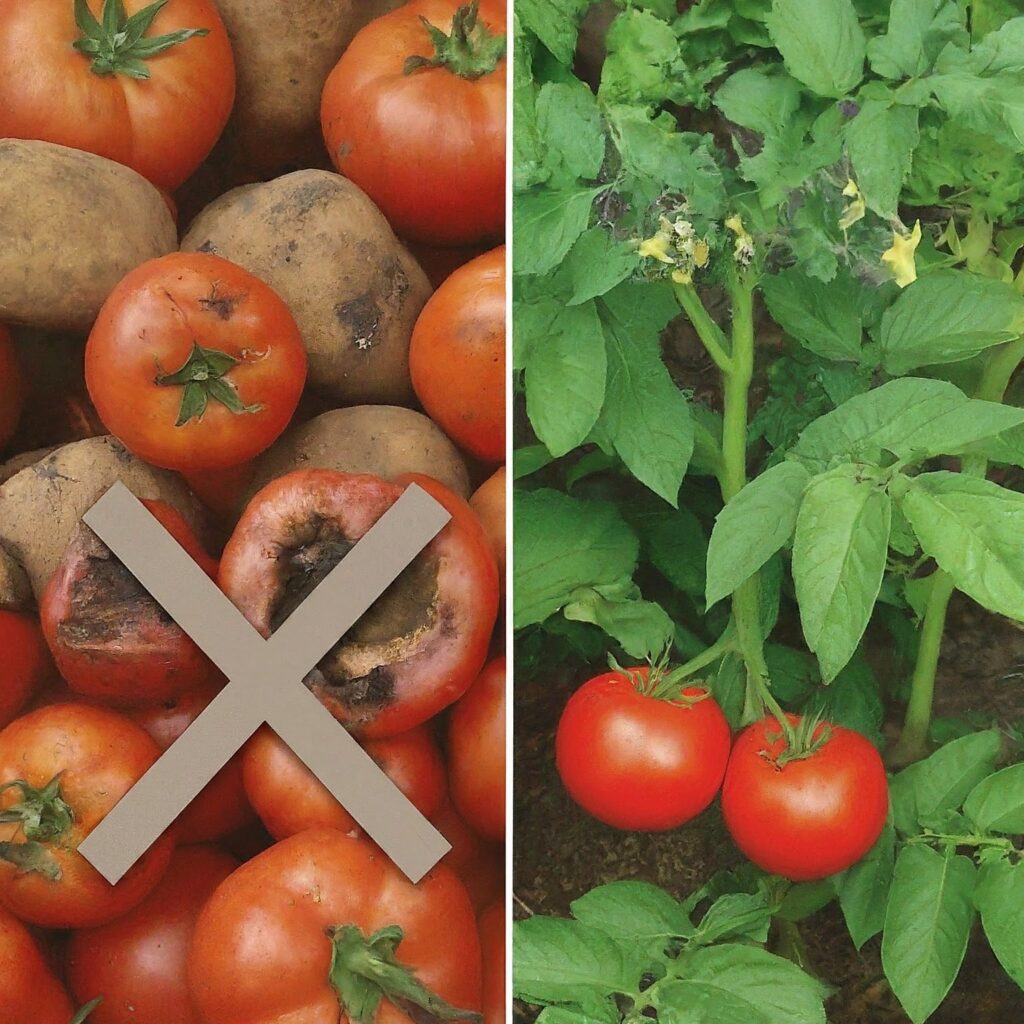Do you want to make the most out of your garden space while keeping pests at bay? Companion planting might be the answer! The strategic pairing of your veggies and flowers not only optimizes space but also creates a natural shield against pesky insects.
While exploring companion planting, you’ll find a blend of tried-and-true methods passed down through generations and innovative techniques rooted in modern research.
In this guide, we’ll dive deep into the topic of companion planting, where age-old wisdom meets cutting-edge science. Plus, we’ll provide you with a companion planting chart for vegetables to help you get started.
So, without further ado, let’s get started.
What is Companion Planting
First things first, what is companion planting? Think of it as hosting a garden party where every plant has a specific role to play, just like guests with different talents at a gathering. It’s a smart gardening trick based on the idea that some plants are just better together, like best buddies who always have each other’s backs.
One plant might have a scent that bugs can’t stand, while another might attract helpful insects that gobble up pests. Together, they create a natural defense team for your garden, keeping it healthy and happy without any complicated chemicals. It’s like having your own little ecosystem right in your backyard!
In simple terms, companion planting involves growing two plants close together to provide benefits to one or both of them. These benefits can be one-sided or mutual, depending on the plants involved.
It’s a proven method for minimizing pests, attracting pollinators, and enhancing overall growth. On top of that, companion plants can improve soil fertility by fixing nitrogen or providing shade and ground cover to retain moisture. That’s how companion plants work.
Benefits of Companion Planting

Companion planting is an amazing practice because it brings so many good things to your garden! Explore companion planting benefits below:
- First, it helps your garden stay healthy and balanced. When you have different types of plants growing together, it attracts helpful bugs and birds. They keep pests away without needing any harmful chemicals.
- Some plants naturally repel insects or scare off unwanted critters. Consider marigolds as another example. Their bright blooms not only add color to your garden but also emit a scent that repels many pests, keeping your plants safe from harm.
- Companion planting is great because you don’t have to use as many pesticides or fertilizers. This makes your garden safer for you and the environment. You can enjoy fresh fruits and veggies without worrying about harmful chemicals.
- This practice can make your plants grow better and taste yummier! Some plant combinations help your plants get more nutrients from the soil. This means they grow stronger and produce more delicious food.
- It helps reduce weeds. When you plant spreading crops like potatoes alongside tall, upright plants, you reduce the empty spaces where weeds often thrive.
- Think of tall plants like beans and trellises. They can offer strong support for smaller crops such as peas and cucumbers, allowing them to grow upward and save space in your garden.
- And let’s not forget about how pretty it makes your garden look! Mixing different colors and textures of plants creates a beautiful garden that you’ll love spending time in.
So, whether you’re a beginner or a seasoned gardener, companion planting is a fantastic way to make your garden thrive. Give it a try and watch your garden come to life with health, flavor, and beauty!
Examples of Best Companion Plants
Let’s take a stroll through the garden and explore some classic companion planting examples that have stood the test of time:
Three Sisters Planting

This ancient Native American tradition combines corn, beans, and squash in a symbiotic trio where each plant supports the others’ growth.
The corn provides a sturdy structure for the beans to climb, while the beans fix nitrogen in the soil for the corn and squash. Meanwhile, the squash acts as a living mulch, suppressing weeds and retaining moisture.
Tomatoes and Basil

These culinary companions not only complement each other on the plate but also in the garden. Basil not only boosts the flavor of tomatoes but also acts as a natural pest repellent, keeping pesky aphids and mosquitoes at bay. Plus, its aromatic foliage adds a delightful fragrance to your garden.
Cucumbers and Nasturtiums

Nasturtiums not only attract aphids away from your cucumber vines but also act as sacrificial plants, drawing pests away from your precious crops. Their vibrant flowers add a pop of color to your garden while serving as a tasty edible garnish.
Strawberries and Borage

Borage is a powerhouse companion plant that attracts pollinators like bees and deters pests with its cucumber-like scent. Planting it alongside strawberries can boost pollination and increase fruit production while keeping unwanted critters at bay.
More Examples
- Companion Plants for Tomatoes: Basil, marigolds, carrots, onions, and garlic make excellent companions for tomatoes, deterring pests and enhancing flavor.
- Cucumber Companion Plants: Planting radishes, beans, corn, and nasturtiums alongside cucumbers can help repel cucumber beetles and other pests while improving soil fertility.
- Strawberry Companion Plants: Try planting borage, spinach, lettuce, or thyme near your strawberries to attract pollinators and deter pests like slugs and snails.
- Companion Plants for Peppers: Pairing peppers with basil, tomatoes, onions, or marigolds can help deter aphids, spider mites, and other pests while improving flavor and yield.
- Companion Crop for Potatoes: Consider planting beans, peas, or corn alongside potatoes to enhance soil fertility and discourage potato pests like potato beetles.
- Companion Plant for Onion: Carrots, beets, lettuce, and chamomile make great companions for onions, deterring pests and maximizing space in the garden.
Companion Planting Chart for Vegetables
It’s no secret that navigating the world of companion planting can be overwhelming. But fear not! With a handy companion planting chart for vegetables, you can easily pair up your favorite veggies for optimal growth and harmony in the garden.
Use our companion planting chart as your guide:
| Vegetable | Good Companions | Avoid |
| Tomatoes | Basil, onions, carrots, parsley, marigolds | Fennel, potatoes, corn |
| Lettuce | Carrots, radishes, strawberries, cucumbers | Cabbage, broccoli, cauliflower |
| Carrots | Onions, leeks, tomatoes, lettuce | Dill, parsnips |
| Cucumbers | Beans, peas, radishes, dill, marigolds | Aromatic herbs, potatoes |
| Peppers | Basil, tomatoes, onions, carrots | Fennel |
| Beans | Cucumbers, corn, carrots, celery, strawberries | Onions, garlic |
| Corn | Beans, cucumbers, peas, squash, potatoes | Tomatoes, peppers |
| Peas | Carrots, radishes, cucumbers, beans | Onions, garlic |
| Broccoli | Beets, carrots, onions, potatoes | Tomatoes, peppers |
| Onions | Carrots, beets, lettuce, tomatoes | Peas, beans |
| Potatoes | Beans, peas, corn, cabbage, horseradish | Tomatoes, peppers, squash |
| Spinach | Strawberries, radishes, onions, peas | Potatoes |
| Cabbage | Beets, celery, onions, potatoes, chamomile | Strawberries, tomatoes |
| Radishes | Peas, lettuce, cucumbers, beans | Hyssop |
| Zucchini/Squash | Corn, beans, peas, radishes, marigolds | Potatoes |
| Beets | Cabbage, lettuce, onions, garlic | Pole beans |
| Garlic | Beets, carrots, lettuce, tomatoes | Peas, beans |
| Sweet Potatoes | Beans, peas, corn, onions, marigolds | Potatoes, tomatoes |
What Vegetables Are Not to Be Planted Next to Each Other?

When it comes to planting vegetables together in your garden, it’s important to be mindful of certain combinations that might not get along well. Even though companion planting is generally beneficial, some pairs can actually cause problems.
For example, if you plant potatoes next to tomatoes, you might increase the chances of a disease called potato blight spreading to your tomatoes. This disease can harm both plants and reduce your harvest.
Similarly, onions and beans might not make the best neighbors because they have different needs when it comes to soil. If they’re planted too close together, they might compete for nutrients and water, which can stunt their growth.
Below are more vegetables not to be planted next to each other:
- Cucumbers and sage: Sage has a strong scent that can deter pollinators, which cucumbers rely on for fruit production.
- Garlic and peas: Garlic may stunt the growth of peas if planted nearby, affecting their overall yield.
- Carrots and dill: Dill attracts pests that can damage carrot roots, so it’s best to keep these two plants separated.
- Lettuce and broccoli: Broccoli produces allelopathic compounds that can inhibit the growth of lettuce if planted too closely.
It’s important to research which vegetables work well together and which ones might be better off planted separately.
How Far Apart Should Companion Plants Be Planted?
Proper spacing is key when it comes to companion planting. It ensures that each plant has the space it needs to grow and thrive, getting enough sunlight, water, and nutrients to stay healthy.
Typically, it’s best to plant companion plants with beneficial relationships within two or three rows of each other.
On the other hand, if there are plants that don’t get along, it’s wise to space them at least two to three rows apart. This helps prevent pests or diseases from spreading too quickly, especially if you’re growing the same crop close together.
Mixing fruits and vegetables with flowers, herbs, or other veggies can offer your garden a variety of useful natural resources.
Conclusion
So, wrapping things up, remember that companion planting isn’t an exact science. But you know what? That’s what makes it exciting! Every garden has its own personality, so what succeeds in one might not in another. That’s where companion planting charts come in handy—they give you a good starting point.
But here’s the deal: don’t forget to jot down your observations. Keep an eye on things that work and things that don’t work. It’s all about trial and error. And guess what? Your experiences can help other gardeners, too!
So, keep on experimenting, keep on learning, and most importantly, keep on growing!
Companion Planting FAQs
What are the 3 best plants to grow together?
The three sisters—corn, beans, and squash—are a classic example of companion planting that embodies synergy and harmony in the garden.
What not to plant with peppers?
Avoid planting fennel near peppers, as it can inhibit their growth and flavor.
What should you not plant next to tomatoes?
Keep tomatoes away from potatoes, as they are susceptible to similar diseases like blight.
What not to plant next to cucumbers?
Avoid planting cucumbers near aromatic herbs like sage and rosemary, as their strong scents may deter pollinators.
What not to plant near marigolds?
Marigolds are excellent companions for many plants, but they may inhibit the growth of beans and cabbage due to the allelopathic compounds they release.
What not to plant next to carrots?
Keep carrots away from members of the onion family like garlic and onions, as they may stunt carrot growth.
What is the difference between companion planting and interplanting?
Companion planting involves pairing plants that benefit each other when grown together, while interplanting refers to planting different crops in the same space to maximize yield and space efficiency.

